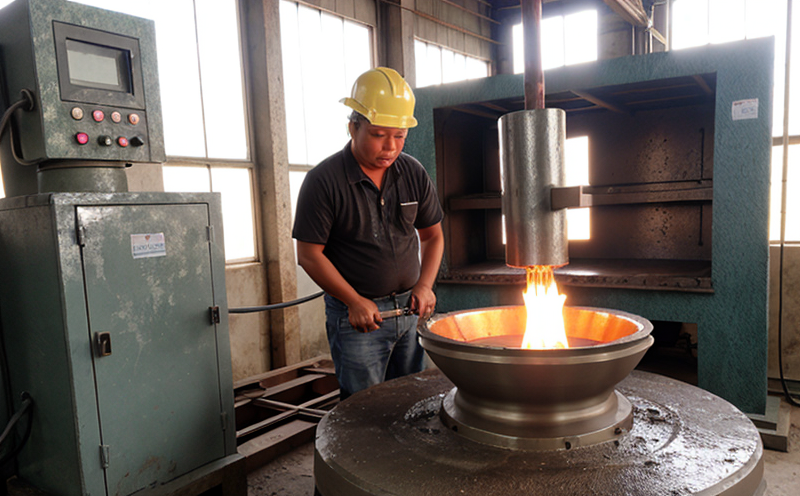ISO 4988 Steel Castings Ultrasonic Testing
The ISO 4988 standard provides a comprehensive framework for inspecting steel castings using ultrasonic testing (UT). This technique is widely employed in industrial manufacturing and processing to ensure the structural integrity and quality of steel components. Compliance with this standard is crucial for industries that rely on high-strength, wear-resistant materials such as automotive, aerospace, construction, and heavy machinery sectors.
Ultrasonic testing involves passing sound waves through a material using a probe. Defects within the casting can be detected based on variations in echo strength and waveforms. This method is non-destructive, making it ideal for quality assurance during production processes. The standard specifies detailed procedures to ensure consistent and accurate inspections.
The process typically begins with careful preparation of the casting surface. Any visible dirt or debris must be removed before testing. A coupling agent such as a water bath ensures efficient transmission of sound waves from the probe to the material. Once prepared, the casting is subjected to ultrasonic pulses which reflect off internal flaws and are captured by the receiving transducer.
The data collected during inspection is analyzed according to ISO 4988 guidelines. Defects exceeding specified thresholds must be identified and documented. Reporting must include defect location, size, type, and any other relevant information as per the standard's requirements. This ensures that manufacturers can address issues promptly and maintain product quality.
Compliance with ISO 4988 not only enhances reliability but also supports regulatory adherence in many regions. For instance, in Europe, EN 15627:2003 incorporates elements of ISO 4988 for similar purposes. Understanding these standards is essential for quality managers and compliance officers looking to streamline their testing protocols.
The ultrasonic inspection process adheres strictly to international norms set forth by organizations like ASTM, EN, IEC, and others. By aligning with such recognized standards, companies can ensure that their practices meet global expectations while maintaining competitive advantage through superior product quality.
Applied Standards
The ISO 4988 standard is specifically designed for ultrasonic testing of steel castings and other ferrous materials. It covers various aspects including probe selection, coupling methods, test procedures, and acceptance criteria. This comprehensive approach ensures that all stakeholders involved in the production chain—from raw material suppliers to end-users—can rely on consistent results.
- ISO 4988:2015 specifies guidelines for the ultrasonic testing of steel castings.
- EN 15627:2003 includes relevant sections that align closely with ISO 4988 standards.
- ASTM E1316 provides additional reference points for non-destructive testing methods.
The application of these standards promotes interoperability among different laboratories and manufacturers globally. By adhering to internationally recognized protocols, industries can foster innovation while ensuring safety and performance across all products.
Scope and Methodology
| Aspect | Description |
|---|---|
| Test Objectives | To detect internal defects in steel castings, ensuring they meet specified quality standards. |
| Preparation Steps | Cleaning the casting surface and applying coupling agent to enhance ultrasonic wave transmission. |
| Instrumentation | Use of high-frequency probes compatible with ISO 4988 specifications. |
| Data Analysis | Evaluation of reflected waves against accepted thresholds defined by the standard. |
The methodology outlined in ISO 4988 emphasizes precision and repeatability. Each step from preparation to final reporting follows strict protocols ensuring accurate defect identification. This approach is critical for maintaining high standards in industrial manufacturing processes where reliability plays a pivotal role.
Industry Applications
- Aerospace: Ensuring the integrity of engine components and structural parts.
- Automotive: Quality checks on critical components like cylinder blocks and transmission housings.
- Construction: Verification of large steel structures used in bridges and high-rise buildings.
- Mining Equipment: Inspection of drills, crushers, and conveyor belts to enhance safety.
In each application area, the use of ISO 4988 ensures that manufacturers adhere to stringent quality controls. This not only protects end-users but also contributes significantly towards brand reputation by delivering consistently reliable products.





